Led by Annette Schiller, the Bordeaux Tour 2022 by ombiasy WineTours
took place from September 20 - Thursday, September 29, 2022. The group comprised 12 wine lovers including Annette and Christian
Schiller.
This posting provides an overview. This posting provides an overview. I am also issuing separate
postings covering individual events, including visits of wineries and
special lunches and dinners. See the list of postings at the end of
the article.
Pictures: Bordeaux City
Annette Schiller: Our way of traveling allows wine lovers to fully experience authentic Bordeaux. "Bordeaux" embodies not only "wine": The interplay of wine and food is very important. Therefore our tour has a strong culinary component, with exquisite wine pairing lunches and dinners at the Châteaux playing a daily part of our journey through the Bordeaux wine region. Drawing on our love and deep knowledge of the region and close personal ties to many of the Château owners/ managers/ winemakers, our small group visits many of the hidden gems that other tours pass by, but which are essential to feel what Bordeaux is all about. In a nutshell: this is an on the ground wine class on Bordeaux!
Accommodation
► Night 1: Tuesday, Sept 20:
Hôtel Hilton Garden Inn in Bordeaux, a 4-star new (opened in July 2018), modern, comfortable hotel with for French standards spacious rooms overlooking the Garonne river and with a great fitness center, in walking distance to the main train station of Bordeaux.
► Nights 2 + 3: Wednesday, Sept 21 and Thursday, Sept 22:
Badon Boutique Hotel in Saint-Emilion, a 4-star gorgeous boutique hotel in the heart of UNESCO world heritage wine town Saint-Emilion. The design is modern chic elegance and style. The hotel is part of Jean Luc Thunevin’s enterprises. He became a well-known figure in the wine world due to his successful garage wine, Château Valandraud.
► Nights 4 + 5: Friday, Sept 23 and Saturday, Sept 24:
Grand Hôtel Français in Bordeaux, a refined lodging in an 18th century mansion right in the center of old town Bordeaux, in walking distance to all interesting places with highly comfortable rooms. This hotel is part of the Best Western group.
► Night 6 + 7 + 8: Sunday, Sept 25; Monday, Sept 26; Tuesday, Sept 27:
Hotel France et Angleterre in Pauillac, a very well equipped, privately owned 3-star hotel in the heart of the Médoc region, right on the waterfront of the Gironde estuary.
► Night 9: Wednesday, Sept 28:
Hôtel Hilton Garden Inn in Bordeaux
ITINERARY
Day 0: Monday, September 19
Except for one couple, all of the participants arrived a day ahead of the tour in Bordeaux City. Annette and I flew from Washington DC to Frankfurt, spent a couple of days in Frankfurt and took the TGV from Frankfurt to Bordeaux City, with a stop over in Paris.
In Paris, we had an extraordinary dinner at Clamato. See here: Dinner at Clamato, the Sister Restaurant of Septime, #22 on The World`s 50 Best Restaurants, with Chef Bertrand Grébaut, Paris, 2022
We arrived in Bordeaux City in the later afternoon and had dinner at one of our favorite wine bars in Bordeaux, Wine More Time.
Arrival in Bordeaux, check-in at Hôtel Hilton Garden Inn.
01.00 pm We meet in the hotel lobby with café and cannellé. Short introduction to the Bordeaux wine region.
01.30 pm Departure at the hotel and drive to Léognan.
02.00 pm Winery tour and Tasting at Château Haut-Bailly, Graves, Appellation Pessac-Léognan, Grand Cru Classé
We got a comprehensive tour of the vineyards and the new wine cellar followed by a tasting in the new tasting room in the wine cellar. When we toured the production facilities we bumped into Jean Christoph, the cellar master, who spent some time with us to explain to us the new facilities and the challenges of the current vintage.
At our visit Château Haut-Bailly was in the middle of the harvest of the 2022 vintage.4.30 pm How Does the Negociant System in Bordeaux Work? Tour and Tasting at Millésima
At Millésima over two million bottles of top Bordeaux wines
are stored and waiting to be shipped. In
Bordeaux wine merchants have always played a decisive part in the wine
world. The buying and selling of wine, the setting of a price of a
bottle of wine from a specific chateau for a specific vintage, the
entire conduct of business is described as „La Place de Bordeaux“.
Millésima is conveniently located just on the other side of
the street of our hotel.
This was a fitting introduction to “Bordeaux”.
07.30 pm Dinner with a View: At Restaurant L’Estacade in Bordeaux City
Our first day in Bordeaux ended with dinner at Restaurant L‘Estacade.
The restaurant literally sits on the Garonne river opposite of Bordeaux city center. The
view on the illuminated Place de la Bourse is breathtaking and makes you fall in love with
Bordeaux right away.
Day 2: Wednesday, September 21
08.30 am Check out of Hotel
We left the Hotel Hilton Garden Inn in Bordeaux City at 08.30 am and drove to to the “Right Bank”. During the next days we explored Saint-Émilion, Pomerol and the Côte de Castillon.
Pomerol is a tiny winegrowing region with only 2000 acres of vineyards, located on the pilgrim road to Santiago de Compostela. Wine has been produced here since Roman times. Later the Knights of the Order of Malta cultivated the vines. In the Middle Ages, these knights established the Commanderie de Pomerol, which still exists today. With its provincial character, it forms a stark contrast to the other far more glamorous Bordeaux appellations. The small properties that could easily be confused with residential homes make clear that architectural glitz and glamour were never a concern here. It all centers around wine; around the deep clay and loam soil that provides for the Pomerol style: dense and powerful, yet rich in finesse, highly aromatic, silky, almost creamy.
Côtes de Castillon, east of Saint-Émilion and just north of the Dordogne river sits on a high plateau and has been the site of considerable interest and investment in recent years. Production is significant, and there are some of the most interesting wines made.
Saint-Émilion with around 14,500 acres under vine is the largest winegrowing region of top-notch wines in France. There are two appellations: AOC Saint-Émilion and AOC Saint-Émilion Grand Cru which was only awarded to 85 châteaux (71 Grands Crus and 14 Premiers Grands Crus). In terms of terroir, Saint Émilion is anything but homogeneous.
As
soon as you enter the village, the limestone slopes, the “Côtes”, come
into view. The foothills of the Côtes are interspersed with larger
portions of sand and gravel. Once at the top you reach the limestone
plateau of Saint-Émilion, with the village prominently sitting in the
center of it and visible from afar. With the châteaux Beau-Séjour Bécot,
La Mondotte, Troplong-Mondot, Tertre Rôtebœuf, Clos Fourtet, among
others, here you find the top wines with the distinguished Saint-Émilion
taste profile.
09.30 am Tour and Tasting at Château La Conseillante, Appellation Pomerol
11.00 am Vineyard Tour, Cellar Tour and Tasting at Clos Puy Arnaud with Owner Thierry Valette, Appellation Côtes de Castillon
Following the visit of Château La Conseillante in Pomerol, we drove all
the way to Côtes de Castillon, which is in the eastern part of the
Bordeaux Right Bank.
Côtes de Castillon sits on a high plateau and has been the site of considerable interest and investment in recent years. Production is significant, and there are some of the most interesting wines made.
We visited Clos Puy Arnaud, one of the top wineries of the Castillon appellation today.
The visit started with an extensive walk in the vineyard, followed by a visit of the wine cellar and finished with a tasting of a range of wines in Thierry Valette's living room.01.00 pm Lunch at Restaurant L’Atelier de Candale in Saint-Laurent-des-Combes
This restaurant sits in a unique location. The stunning terrace looks out over unbeatable views of the sea of vines in the vineyards of the Saint-Émilion appellation and the Dordogne valley.
03.15 pm Tour and Cellar Tasting at Tertre-Rôtebœuf with Owner/ Winemaker François Mitjavile, Appellation Saint-Emilion
Owner
and Winemaker François Mitjavile was our host at Tertre Rôteboeuf.
We started the tour in the garden of Tertre Rôteboeuf, with a
magnificient view of the vineyards of Tertre Rôteboeuf. We then went
down into the tiny cellar of Tertre Rôteboeuf for a tasting from barrel.
We finished the visit with a tasting from bottle in the backyard of
Tertre Rôteboeuf; François got this bottle from his library.
We tasted in the cellar: 2021 Tertre Rôteboeuf from barrel and 1994 Roc des Cambes from bottle. We tasted in the backyard: 1995 Tertre Rôteboeuf from bottle.
François Mitjavile is a very articulate and eloquent winemaker, a very cultivated person and a passionate communicator, who likes to illustrate what he wants to say about his wine with parallels from music, art and philosophy.We stayed at the Badon Botique Hotel, which is right in the center of the medieval village of Saint-Émilion.
05.45 pm Walk to the Tourist Office in Saint-Émilion
06.00 pm Tour of Saint-Émilion
An English speaking guide led us on a walking sightseeing tour through the romantic, spectacular medieval town of Saint-Emilion perched on the edge of a limestone plateau. We visited the underground monuments and the unique monolith church hewn into the rock the town rests on. Saint-Emilion is a UNESCO world heritage site!
08.00 pm Dinner at Restaurant Le Bouchon in Saint-Emilion
We had a lovely dinner on the market place, soaking in the spectacular architectural heritage and breathtaking atmosphere of illuminated Saint-Emilion.
Day 3: Thursday, September 22
09.30 am Vineyard Tour in a Golf Cart and Tasting at Château Beau-Séjour Bécot, Premier Grand Cru Classé, Appellation Saint-Émilion
Château Beau-Séjour Bécot has the most beautiful underground cellars of the entire appellation. It is a dream how these cellars were carved into the limestone.
However, Château Beau-Séjour Bécot is in the process of constructing a new wine cellar. As result, our winery tour did not include the wine making facilities and focussed instead on the vineyards. Indeed, our host, Sommelier Loïc Riva, drove us in a golf cart through the vineyards.
The visit ended with a seated tasting of 3 wines.
11.00 am Winery Tour and Tasting at Château Dassault with the Managing Director,
Grand Cru Classé, Appellation Saint-Émilion
When we visited Château Dassault, they were in the middle of the harvest and we spent some time watching the reception of the fruit at the estate. Managing Director Romain Depons then took us on a tour of the wine making facilties. The visit ended with a tasting.
12.45 pm Gourmet Wine-pairing Lunch at Château Le Bon Pasteur, Pomerol, with Dany Rolland
We had a fabulous three course gourmet lunch with wine pairing at Château Le Bon Pasteur, hosted by Dany Rolland and
General Manager Benoit Prévot. Chef Frédéric Bozzo was in the kitchen.
Before lunch, Dany and Benoit gave us a tour of the estate.
Château Le Bon Pasteur, with its 15 acres of vineyards, is an iconic estate located at the junction of the famous terroirs of Pomerol and Saint-Émilion. The soils here are gravel, sand, and clay. It was in the Rolland family since 1920.
The grandson of the original owner, Michel Rolland, well known around the world as “flying winemaker” and wine consultant, and his wife Dany, a highly regarded oenologist in her own right, created a model vineyard and produce outstanding wines. Around 1978 they started Rolland Laboratories in Libourne which morphed into the consultant business. Michel and Dany Rolland were the first consultants to advise growers on vineyard management techniques that were considered over the top at that time. The grapes in each plot are picked at ideal ripeness. They are separately fermented in new barrels or small temperature controlled vats. Winemaking is as non-interventional as possible in order to retain the specific character of each plot and grape variety throughout barrel ageing and until the final blend.
Dany and Michel were also one of the earliest Bordeaux winemakers who recognized the potential of the Mendoza and Salta valleys in Argentina.
03.45 pm Back at hotel in Saint-Émilion.
04.30 pm Cellar Tour and Tasting at Couvent des Jacobins, Grand Cru Classé, Appellation Saint-Émilion
The Couvent des Jacobins, Grand Cru Classé, Appellation Saint-Émilion, is right in the middle of the old town of Saint-Émilion. We walked there from our hotel. This was the last event of the day and the last event in Saint Saint-Émilion. We toured the cellar and had a tasting of 3 wines.
Couvent des Jacobins, Grand Cru Classé, Appellation Saint-Émilion: Nestled at the heart of the World Heritage city of Saint-Émilion, Couvent des Jacobins is among those places whose soul and identity linger in the memory of those who visit it. From the Middle Ages to today, from the Jacobin Friars to the Jean and Joinaud families, Couvent des Jacobins has spent almost 7 centuries celebrating winemaking, an exceptional terroir, and the great tradition of the Classified Growth wine estates of Saint-Émilion, a unique UNESCO World Heritage.
06.00 pm Back at hotel.
Day 4: Friday, September 23
08.50 am Check out of the hotel and departure from Saint-Emilion.
09.15 am Vineyard Tour, Cellar Tour, Lecture and Tasting at Château Reynier with Owner/ Winemaker Marc Lurton, Appellation Entre-Deux-Mers
We left the right bank, crossed the Dordogne river and went to the Entre-Deux-Mers region. We visited one of the so-called “Petits Châteaux” and realized that there are excellent wines made in Bordeaux by many of the not so known châteaux.
The average wine searcher price for Château Reynier, Appellation Entre-Deux-Mers, is US$ 13. Château Reynier is one of the hundreds and hundreds of so-called petits châteaux in Bordeaux that produce excellent wines for little money. These petits châteaux can struggle to make their voices heard on the market.In the case of Château Reynier, it is a bit different, because the estate is owned and run by Marc and Agnès Lurton. The Lurtons are Bordeaux’s first family, at the helm of scores of châteaux across the region and, increasingly, the world.
Marc Lurton was our host.
11.15 am We left the Entre-Deux-Mers region and traveled to the Sauternes wine region where the world renowned sweet wines are produced.
12.00 pm Vineyard Tour, Cellar Tour and Tasting at Château Coutet, Premier Grand
Cru Classé, Appellation Sauternes, with Technical Director Laurier
Girardot
Typically, we visit one sweet wine producer in Sauternes/ Barsac during the Bordeaux Tour by ombiasy WineTours. This time, we visited Château Coutet.
Laurier
Girardot, Technical Director, was our host. We spent quite some time in
the vineyard befor touring the wine cellar and tasting 5 Château Coutet wines, including grand vin 2016, 2010 and 1989.
The history of Château Coutet in Barsac, the neighbouring community of Sauternes, can be traced back to the 13 th century. Originally it was built as a fort which you can still see today in the layout of the château with its massive tower. Since 1643 Château Coutet is a full-time Sauternes wine producing estate. It changed ownership many times, for about 100 years (early 19 th century – early 20 th century) it belonged to the Lur-Saluces family, the owners of Château d’Yquem.
In 1787 wine connoisseur Thomas Jefferson described the Coutet wines as the best one in Sauternes-Barsac when he was ambassador in France. In 1855 Château Coutet was classified as Premier Cru Classé which was granted to only 15 châteaux in the Sauternes-Barsac appellation -with d’Yquem as Premier Cru Classé Superieur.
Modern times started at Château Coutet when the Alsatian Marcel Baly acquired the estate in 1977. The vineyards and cellars were not in perfect shape at that time and the Baly family put in a lot of investment and work to do extensive replanting in the vineyards and to renovate the cellars. After a decade or so the vintages showed an immense improvement in the wines and what Château Coutet was capable of.
Current manager of Château Coutet is Marcel Baly’s granddaughter Aline Baly, who was educated in the US. Her uncle Philippe supports Aline in running the business.
Château Coutet produces around 4,000 cases (yield of 9hl/ha!) of sweet wine annually on 87 acres. The vineyards are planted with 75% Semillon, 23% Sauvignon Blanc, and 2% Muscadelle. Just in less than a mile east of the vineyards lies the Ciron river, credited with bringing the condition for botrytis to the region. Since 2010 Château Coutet also produces a dry white wine called Opalie de Château Coutet from a blend of 50% Sauvignon Blanc and 50% Semillon.
01.45 pm Lunch at Restaurant L’Entrecœur in Preignac, Sauternes
This is a typical
French family restaurant with lovely homemade food of excellent quality.
04.30 pm Winery Tour and Tasting at Château Smith-Haut-Lafitte, Grand Cru Classé
Appellation Pessac-Léognan
Overall, and compared to Napa Valley, for example, Bordeaux is a rather sleepy area, not well prepared to receive
wine lovers from all over the world to experience the wines they love
so much in the area, where the wines are made. But things are changing.
Wine tourism has caught up with Bordeaux. One producer that clearly is
a leader in this wine-tourism movement is Château Smith-Haut-Lafitte.
We visited Château Smith-Haut-Lafitte in the afternoon, on the way back
from Sauternes to Bordeaux City. In fact, Château Smith-Haut-Lafitteis
located in the boudaries of the Greater Bordeaux City area.
When
we arrived, they were cleaning the reception area for the harvest. The
tour included a stop in the vineyard, in the red wine bottle cellar, the
white wine bottle cellar and in the tank cellar, followed by a tasting
of 3 wines and a short visit of the library.
The noble Bosq family started growing grapes here as early as 1365. The property was purchased in the 18th century by Scotsman George Smith, who gave the estate its present name. He also built the manor house and exported his – by now famous – wine to England on his own ships. Current owners are Florence and Daniel Cathiard.
Both Florence and Daniel were professional skiers belonging to the French Olympic ski team in the mid-1960s (with triple gold medal legend at the 1968 Winter Olympics Jean-Claude Killy). After their career in sports, Daniel built a supermarket and sporting goods store imperium and Florence an advertising agency. In 1990 they bought Château Smith-Haut-Lafitte with the wealth generated by the sale of all their assets. They brought the quality of Smith-Haut-Lafitte wines to the level for which they were once renowned.
06.45 pm Arrival in Bordeaux City.
Check in at Grand Hôtel Français in Bordeaux.
Grand Hôtel Français in Bordeaux, a refined lodging in an 18th century mansion right in the center of old town Bordeaux, is in walking distance to all interesting places with highly comfortable rooms. This hotel is part of the Best Western group.
Back in Bordeaux City, Annette and I returned to Wine More Time for charcuterie and cheese, with 4 particiapants of the tour.
Walking Home to the Hotel
Day 5: Saturday, September 24
Today we explored the Fronsac appellation.
Clive Coates, Master of Wine, one of the world’s leading wine authority, writes: “Of all the non-classic areas of Bordeaux—outside the areas of Haut-Médoc, Médoc, Pessac-Léognan, Saint-Émilion and Pomerol—Fronsac wines have the most definition, the most personality.... A good Fronsac wine will usually cost less than a Médoc cru bourgeois, or a minor Saint-Émilion grand cru classé and is normally a better wine. So the area has value for money, too, on its side.“12.15 pm Lunch at the Dordogne River at Restaurant Le Bord d’Eau in Fronsac
We had lunch
at Restaurant Le Bord d’Eau in Fronsac. The restaurant literally sits
on the Dordogne river. The view is gorgeous and the food is recommended
by the Michelin guide.
The restaurant literally sits on the Dordogne river. The view is gorgeous and the food is recommended by the Michelin guide.
02.30 pm Winery Tour and Seated Tasting at Château de la Rivière, Appellation
Canon-Fronsac
Following lunch at the Dordogne River we visited Château de la Rivière. After a tour of the impressive underground cellars, we sat down for an extensive wine tasting.
Château de la Rivière
The beginnings of Château de la Rivière go back to the 8th century when emperor Charlemagne gave the order to construct a fort on this strategic location. It is impossible to overlook this fairytale Château, which it is now after being converted from a fort into a château in the 16-hundreds, when driving through the Fronsac region.
It sits on a commanding hillside position overlooking the vineyards below. Château de la Rivière was owned by the same family for more than 500 years.
In 1995 Jean Leprince purchased the estate and undertook major modernisations. He was killed in a helicopter crash in 2002 and James Grégoire, the wealthy owner of a grape harvesting machine manufacturer, bought the château. In December of 2013 the wine world was shocked to learn that James Grégoire also died in a helicopter crash. He was flying over the vineyards with Chinese billionaire Lam Kok a day after he had signed a deal to sell him Château de la Rivière. Today it is the widow of Lam Kok, who owns the estate.
Château de la Rivière is the largest winemaking estate in the Canon-Fronsac appellation with about 150 acres of vineyard. 80% is planted with Merlot, 12% with Cabernet-Franc, 6% with Cabernet-Sauvignon, and 2 & with old Malbec vines. In addition to the red wine the Château produces a dry white wine made from 67% Sauvignon Blanc and 33% Sauvignon Gris.
The terroir is predominantly limestone, similar to the Saint-Émilion appellation. Agricultural engineer and enologist Xavier Buffo is the executive director of Château de la Rivière. He has been working there since 1997, guaranteeing continuation and consistency and he is determined to make sure that the wines of Château de la Rivière are among the leading names in the appellation. 05.15 pm Back at Grand Hôtel Français in Bordeaux City.
Annette and I went for a charcuterie and cheese with a bottle of wine
to Restaurant La Terrasse Saint Pierre. This is a very lively restaurant
at the Place Saint Pierre with a good wine list. We wre joined by 2
participants of the tour.
Walking back Home to the Hotel
Day 6: Sunday, September 25
10.00 am Check out
12.00 pm Lunch at Pinasse Café, Cap Ferret, at the Bassin d'Arcachon
On the Bordeaux Tour by ombiasy WineTours, we always spent one day at the Bassin d'Arcachon. Our favorite place for lunch is Pinasse Café, Cap Ferret, with a gorgeous view over the bay, the oyster farms and the village of Arcachon and the Dunes de Pilat, the largest in Europe, in the distance.
About an hour away by car from Bordeaux City is the Bassin d'Arcachon. We can now comprehend how close the Bordeaux wine region is to the Atlantic Ocean and how this proximity to the Gulf Stream and the Atlantic influences the climate and thus the terroir.
The Bassin d’Arcachon is one of the most beautiful regions in France. This region is a perfect mix of the earthy traditions of the Landes region and the seaside joys of the Atlantic coast of France. It has a special atmosphere with stunning landscapes and culinary traditions.
03.15 pm At La Baraque à Huîtres in L’ Herbe: Visit of an Oyster Farmer at the Bassin d'Arcachon
After lunch at Pinasse Café, Cap Ferret, with a gorgeous view over the bay, the oyster farms, the village of Arcachon, and the Dunes de Pilat, the largest sand dune in Europe, in the distance, we drove on the small strip between the Atlantic Ocean and the Bassin d'Arcachon to the North (with Pauillac being the final destination) and stopped twice.
First, we stopped shortly after Cap Ferret and went to the beach of the Atlantic Ocean.
Second, after a few miles, we stopped at L'Herbe for a visit of an oyster farmer and an oyster tasting. Unfortunately, the rendezvous with the oyster farmer did not take place. Instead, we walked around in L'Herbe and sat down at La Baraque à Huîtres and had some fresh oysters and white wine.
L'Herbe - André Rebsomen (1870 - 1963)
".… we arrive at L’Herbe, the first of the picturesque little fishing and oyster farming villages that we will encounter on our way. We will notice in the middle of the small huts, old pontoons which serve as henhouses, bonfires or even dwellings and which look like stranded whales. In the streets of this peculiar hamlet grow trellises laden with grapes or various plants with bright flowers. If you want to enjoy a superb view of the Basin, you will climb the low dune which dominates it.”
Almost 100 years later, the description still fits. Not much has
changed and you feel that the time stands still here.
06.15 pm Arrival in Pauillac and check-in at Hôtel France et Angleterre in Pauillac.
08.00 pm Dinner at Restaurant France et Angleterre.
We spent a total of 3 evenings in Pauillac.
We ate once at the restaurant of Hotel de France et Angleterre and twice at La Salamandre, which is a block away from the hotel. Both restaurants offer good food and classified Bordeaux wines at very decent prices.
Day 7: Monday, September 26
08.50 am Departure.
Today we begin our exploration of the Left Bank: Saint-Éstèphe, Margaux, Saint-Julien, Pauillac.
09.00 am Winery Tour and Vertical Tasting at Château Cos d’Estournel, 2ième Grand Cru Classé, Appellation Saint-Estèphe.
Château Cos d’Estournel was the first left bank château we visited on the Bordeaux Tour 2022 by ombiasy WineTours, France. The visit was quite extensive - lasting 3 hours - and intensive - including a verticale tasting of 5 vintages.
We started out with a general introduction in front of the château. We then went to a vineyard, where we also could see the set-up for the fruit reception during harvest. We then toured the tank and the barrel cellars. The visit ended with a verticale tasting of 5 vintages.
From
Château Cos d’Estournel we went to Maison Cos d’Estournel, a
Michelin-rated restaurant belonging to Château Cos d’Estournel, were we
had lunch.
Château Cos d’Estournel boasts of one of most impressive architecture in all of Médoc.
In 1791 Louis Gaspard d’Estournel inherited holdings in Saint-Estèphe upon the death of his father. Over the years he added more land to his holdings, and bought several vineyards in the commune of Saint-Estèphe. The potential of Saint-Estèphe in those days was not fully recognized compared with the appellations further south (Pauillac, Saint-Julien, etc.), which were already fully exploited. Louis Gaspard was enthusiastic about his wines but there was no reputation for this appellation at this time. He ran into financial difficulties and the estate was acquired by a debt collector in 1811. He remained on board as manager and was able to buy it back in 1821. In the meantime recognition for Saint-Estèphe wines was on the rise and in the decades that followed Louis Gaspard was able to buy the best plots off neighboring estates.
Settled in, and seemingly financially secure, Louis Gaspard d'Estournel started to build new cellars and a “châteaux”. His taste reflected his many travels to the Orient, and he constructed tall pagodas, and an imposing arch decorated with lions and unicorns. The doorway was sent over from the Palace of Zanzibar. In 1852 – one year before his death - he again had to sell and the châteaux changed hands many times since then.
Current owner is industrialist Michel Reybier, who acquired Cos d’Estournel in 2000. He kept Jean-Guillaume Prats, descendant of the Ginestet-Prats family, owners from 1917 till 1998, as Managing Director. He was a divisive figure. He was one of the influential persons in Bordeaux pushing for a “new” Bordeaux style.
From 2013 to 2017 Aymeric de Gironde was Managing Director. He shifted to a fresher, more elegant and poised style of the Cos d’Estournel wines.
Today owner Michel Reybier manages the estate himself and winemaking is in the hands of Dominique Arangoïts who also has a keen awareness of balance and freshness.
12.00 pm Lunch at La Maison d’Estournel in Saint-Éstèphe.
This Michelin recommended restaurant belongs to Château Cos d’Estournel and is located just down the road. The varied menus, excellent presentations, well-executed plates, very attentive staff, and beautiful setting make for a great meal experience.
2:30 pm Tour and Tasting at Château Phélan-Ségur in Saint-Éstèphe, with
Winemaker Fabrice Bacquey
The
last time we stopped at Château Phélan-Ségur, during the Bordeaux Tour
2019 by ombiasy WineTours, we enjoyed a tour, tasting and lunch, with
General Manager
Véronique Dausse and Winemaker Fabrice Bacquey. This time, we did not have
lunch at Château Phélan-Ségur, but only a tour and a tasting. However,
we were there right in the middle of the 2022 harvest and spent some
time watching the reception of the fruit.
We met Fabrice Bacquey, Maître de Chai (Winemaker), briefly.
Château Phélan-Ségur is beautifully situated in the village of Saint-Estèphe with a spectacular view over the Gironde estuary. Its origins date way back but the official history of Phélan Ségur began at the end of the 18th century when a young Irish wine broker, Bernard Phelan, settled in Bordeaux, and eventually bought two wine producing estates Clos de Garramey and Château Ségur (previously owned by Nicolas Alexandre de Ségur, nicknamed “Prince of Vines” because of his many properties in the Médoc) which he merged to become Château Phélan-Ségur. In 1810 Bernard Phelan built the magnificent, imposing Château that remains practically unchanged today. In 1985 the estate was acquired by Xavier Gardinier and is now run by his three sons. Château Phélan-Ségur is a fairly large estate with 175 acres of vineyards. The Phélan-Ségur wines are known for their immense complexity which is due to the great diversity of the terroir.
04.15 pm Tour and Tasting at Château Ferrière, 3ième Grand Cru Classé, Appellation Margaux.
Château Ferrière, 3ième Grand Cru Classé, Appellation Margaux, is one of the pioneers of organic and biodynamic winemaking in Bordeaux. Since 2018 Château Ferrière is certified Biodyvin and Demeter.
We started the visit with a tasting in the tasting room and then toured the winemaking facilities. We visited Château Ferrière in the middle of the harvest of the 2022 vintage.
Château Ferrière, 3ième Grand Cru Classé, Appellation Margaux is also connected to the Lurton family, but not owned by a member of the Lurton family.
The estate was founded by Gabriel Ferrière in the mid 18 th century. He was an aristocrat in charge of the king's hunting outings during the 18th century. In 1777, he sold it to his cousins. One of them, Jean Ferrière, will become mayor of the city of Bordeaux after Robespierre's fall, in 1795.
During the 1855 classification of the Medoc growth Château Ferrière was classified as third growth. The estate remained in the hands of the Ferrière family until 1914, when it was sold to Armand Feuillerat, then owner of another Margaux classified growth, Château Marquis de Terme.
In 1952, the illustrious Alexis Lichine leased the vineyards of Château Ferrière. He was also owner of parts of Château Prieure Lichine and Lascombes, a second growth in Margaux. The wines of Château Ferrière were then vinified at Château Lascombes. For 40 years, only a small quantity of bottles of Château Ferrière was produced and the wine somehow became a second label for Château Lascombes.
In 1988 the Merlaut family, négociants in Bordeaux, purchased the vineyards and the buildings, but it is only in 1992 that the agricultural lease came to an end. The family then took over the management of the vineyards as well as the vinification.
Owner today is Claire Villars, granddaughter of Jacques Merlaut, who married Gonzague Lurton, Henry Lurton’s older brother. The 50 acres of vineyards are characterized by Garonne gravel laying over a deeper chalk and marl. The vineyards are planted with 64% Cabernet Sauvignon, 30% Merlot, 4% Petit Verdot, and 2% Cabernet Franc.
In 2012 Claire Villars began the conversion to organic winemaking, in 2015 they were certified organic, she consequently pushed further and undertook the journey to biodynamic winemaking. Since 2018 Château Ferrière is certified Biodyvin and Demeter.
Her husband Gonzague Lurton also converted his property, Château Durfort-Vivens in Margaux, to organic and biodynamic winemaking and together they now own the largest area of certified biodynamic vineyards among the Grands Crus Classés of 1855.
06.30 pm Back at Hôtel France et Angleterre in Pauillac.
Day 8: Tuesday, September 27
09.00 am Departure and drive to Vertheuil. Along the route we went by the famous Châteaux Mouton Rothschild, Lafite Rothschild as well as Cos d’Estournel.
09.30 am How a Barrel is Made: Visit of the Cooperage Berger & Fils in Vertheuil
A very special stop during the 2022 Bordeaux Tour by ombiasy WineTours was the one at Cooperage Berger et Fils. Until very recently, and for a long time, the company was a family-company, run and owned by René Berger and his wife Valérie Berger. Cooperage Berger & Fils in Vertheuil was recently acquired by the TFF Group.
Berger & Fils is one of the top notch cooperages in Franc. Only the top gun châteaux order their barrels here. It is a small enterprise, and everyone working there strives to make the best and perfect barrique for the wine to ferment and mature to perfection.The Deputy Managing Director of Cooperage Berger & Fils was our guide.
11.45 am Winery Tour and Tasting at Château Pichon Longueville Comtesse de Lalande, 2ième Grand Cru Classé, Appellation Pauillac, with Nicolas Glumineau, Managing Director
If you would ask the participants of the Bordeaux Tour 2022 by ombiasy WineTours which one was the most memorable event of the tour, my guess is that the tour, tasting and lunch at Château Pichon Longueville Comtesse de Lalande would come out on top.
First, Château Pichon Longueville Comtesse de Lalande, 2ième Grand Cru Classé, Appellation Pauillac, is one of the most prestigious Bordeaux estates.
Second, our host was Nicolas Glumineau, the Managing Director. On that day he gave us 2/3 of his precious time. After an introduction, he showed us the new winemaking facilities. He were lucky and could olbserve the reception of the 2022 fruit. We then spent an hour doing a tasting in the tasting room with a beatiful view at the surrounding estates, including Latour and Palmer. We then moved to the historic building for a gourmet lunch at Château Pichon Longueville Comtesse de Lalande with more Château Pichon Longueville Comtesse de Lalande vintages and Champagne of Louis Roeserer, the owner of Château Pichon Longueville Comtesse de Lalande.
Château Pichon Longueville Comtesse de Lalande as well as Château Pichon Longueville Baron across the street share the same history until the division in 1850. The history can be traced back to the late 16-hundreds when Pierre des Mesures de Rauzan acquired a section planted with vines in the Latour seigneurie. His daughter married Jacques de Pichon Longueville. Their son Baron Joseph de Pichon Longueville died in 1850. He had five children, three daughters and two sons. In his will, he divided the vineyards equally between his children, hence he gave two-fifths of the estate to his sons and three-fifths to his daughters. One of the daughters, Virginie, had married Comte Henri de Lalande. It was Virginie Comtesse de Lalande who gave her name to the girl’s portion of the Pichon estate. Only three families owned the estate since its existence, the current one being the Champagne Louis Roederer family who bought the property in 2007.
In 2011 the family appointed Nicolas Glumineau as Managing Director.
The 225 acres of vineyards are gravel over a layer of sandstone and limestone. A big chunk of the vineyards is on the other side of the road next to the Pichon Baron estate stretching south bordering the Léoville estates in Saint-Julien and touching the Lynch-Bages vineyards to the north The filet piece is the gentle slope that leads to the Gironde estuary next to the Château neighboring the 1 st growth Latour property.
Nicolas Glumineau started to convert step by step to biodynamic farming in 2014. Pichon Lalande became 100% biodynamic in 2021. The elegance of the wines in combination with the beautiful, graceful Château, which is one of the most stunning ones in the Médoc make this estate very special.
12.45 pm Wine-pairing Lunch at Château Pichon Longueville Comtesse de Lalande,
2ième Grand Cru Classé, Appellation Pauillac, with Nicolas Glumineau,
Managing Director
03.30 pm Winery Tour and Seated Tasting at Château Gruaud-Larose, 2ième Grand Cru
Classé, Appellation Saint-Julien
Château
Gruaud-Larose in the Saint Julien appelation is one of fifteen
Deuxièmes Crus (Second Growths) in 1855 classification. We toured the
winery and enjoyed a seated tasting.
The era of Château Gruaud-Larose began in 1757 when three members of the Gruaud family, a knight (Joseph Stanislas Gruaud), a priest, and a judge, owned the estate with 260 acres of vineyards. They bottled the wines at two different estates: Chevalier de Gruaud, which was produced by the priest and Abbe Gruaud produced by the judge.
The judge died in 1778 and his son-in-law, Joseph Sebastion La Rose, became his heir. From then on the estate was referred to as Château Gruaud-Larose. After the pastor’s death, the estate was split into two separate entities, known as Guaud-Larose Sarget and Gruaud-Larose Faure.
In 1917, the Sarget portion was bought by the Cordier Family, wealthy négociants in Bordeaux. In 1934 Désiré Cordier bought the Faure portion. The Cordiers were able to recreate the original Guraud-Larose estate which became their flagship.
In
1997, Château Guraud-Larose was purchased by another important Bordeaux
négociant family headed by Jacques Merlaut, who put together a portfolio
of properties under the Taillan wine trading
group. The Taillan
Group, a family business in which Jacques Merlaut’s granddaughter Claire
Villars-Lurton has taken on a significant role, now owns several
estates in the Bordeaux region. Enologist Georges Pauli continues to run
the Château Gruaud-Larose with great success.
Today, the estate has 200 acres under vine planted with the traditional Left Bank varieties Cabernet Sauvignon 61%, Merlot 29%, Cabernet Franc 7%, and Petit Verdot 3% . The vineyard is unique as the estate has one of the largest vineyards in all of Bordeaux with most of its vines in one single block. I quote from the château’s website: “Since the vintage 2019, we have been implementing the measures necessary for the conversion to organic farming. We also use biodynamic tools and practices: use of herbal teas from different plants as alternatives to fight against certain parasites and diseases.”
05.45 pm Back at our hotel in Pauillac.
Day 9: Wednesday, September 28
09.00 am Check out of hotel, Drop off luggage at bus, and departure.
09.05 am Winery Tour and Tasting at Château Lynch-Bages, 5ième Grand Cru Classé, Appellation Pauillac
Château Lynch-Bages is a 5ième Grand Cru Classé in Pauillac. We toured the new winemaking facilities and the old vat house that has been converted to a museum showing historic winemaking equipment of the Médoc. The visit ended with a tasting of 2 wines in the tasting room, a Chateau Lynch Bages and a Château Les Ormes-de-Pez.
The history of the estate goes back to the mid 18-hundreds and reflects the interesting history of English and French rule in Aquitaine. The original owners, the Lynch family from Ireland, could trace back their roots to an ancestor who was a companion of William the Conqueror. Without an heir, in 1824 the estate was sold and was in the hands of two other families before Jean-Charles Cazes acquired the property in 1934.
Since then, the Cazes family has invested heavily and started an in-depth modernisation in the 1980s.
75% of the 250 acres of vineyards are planted with Cabernet Sauvignon, the rest with Merlot, Cabernet Franc, and Petit Verdot. Detailed attention is given to the vineyard management. I quote Château Lynch-Bages: “The structuring of the vineyards has undergone remarkable improvements since 2006 with the use of satellite technology combined with surveys on soil quality. It has allowed us to establish a precise mapping and re-structuring of vine parcels in order to preserve, enhance, and develop the specific nature of each terroir.”
Today the château is owned and managed by Jean-Michel
Cazes. Lynch Bages’ old vat house has been converted to a museum showing
historic winemaking equipment of the Médoc.
Lynch Bages produces 3 wines.
Chateau Lynch Bages, AOC Pauillac, 5th Grand Cru Classe, 25,000 cases.
Echo de Lynch Bages, AOC Pauillac, 10,000 cases, often a blend of 50 to
60% Cabernet Sauvignon, 25 to 30% Merlot and 15 to 20% Cabernet Franc.
Blanc de Lynch Bages, AOC Bordeaux Blanc 4,000 cases. They begun making white wine in 1990.
11.30 am Vineyard Tour, Cellar Tour and Picnic-style Lunch at Château Kirwan,
3ième Grand Cru Classé, Appellation Margaux
Château Kirwan is a 3ième Grand Cru Classé in Margaux. The visit of Château Kirwan comprised of a vineyard and cellar tour, followed by a light lunch at Château Kirwan.
Château Kirwan exists since the late 17 th century. In 1710 Sir John Collingwood, a wine merchant, bought the property and established it as working vineyard. His daughter married an Irishman, Mark Kirwan and hence the name was born.
Thomas Jefferson, then Ambassador of the United States in France, visited the Bordeaux vineyards in May 1787. He was not only the future president of the United States, but the greatest emissary of Bordeaux wines. In his travel diary and his book Jefferson on Wine, he elevated Kirwan wine to a second classified growth, making it much more recognizable on the far shores of the Atlantic.
After Mark Kirwans’s death the heirs sold the estate in 1827, in the midst of a severe economic crisis after the upheavals of the French Revolution and the First Empire. Camille Godard, a botanist and later the Mayor of Bordeaux, purchased the estate. His interest in the wines of Châteaux Kirwan was somewhat limited, and at the turn of the century it was sold at auction, and acquired by the négociant firm Schroder & Schyler.
Since 1950 the Schyler family has invested heavily in the châteaux and the vineyards. The latest major investments were undertaken in 2016 when a state-of-the-art new vinification and barrel cellar was constructed. Today the château is managed by the next generation Yann, Natalie and Sophie Schyler.03.00 pm Check in at Hôtel Hilton Garden Inn in Bordeaux city
05.30 pm Dinner in the Private Quarters of the Château Bouscaut, Grand Cru Classé
de Graves, Appellation Pessac-Léognan, with Owner Sophie Lurton
Cogombles and Winemaker/ Owner/ Husband Laurent Cogombles
The final event of Bordeaux by ombiasy WineTours is always a private dinner at a worldclass château. This time, it was at Château Bouscaut, Grand Cru Classé de Graves, Appellation Pessac-Léognan, with the owner/ winemaker couple Sophie Lurton and Laurent Cogombles-Lurton.
The bus ride from the hotel was about 30 minutes. At the château, we started out with a tour of the vineyards and the winemaking facilities.
We then moved to the living room for the apperitif. We were joined there by Laurent.
We then proceeded to the dining room and were served a meal prepared by the private chef.
This
exclusive 4-course dinner with 6 different wines in the private living quarters with Sophie
and Laurent was the perfect finale of our wine and gourmet tour.
Château Bouscaut belongs to the 16 estates classified in the 1953 classification of Graves.
As with Château Pape-Clément, Bouscaut is classified for its red and white wine.
The history of Château Bouscaut goes back to the 17th century. As with other châteaux in Bordeaux ownership has changed several times. In 1979 Lucien Lurton bought Château Bouscaut.
In 1992 his daughter Sophie Lurton inherited the estate. Since 1997 Sophie’s husband, Laurent Cogombles, has been involved in managing the Château and he is the director in charge of winemaking.
Today Château Bouscaut has 130 acres of vineyards in the commune of Cadaujac which makes it the largest estate in the commune. This big vineyard is essentially one large parcel with an average age of 40 years for the vines. 105 acres are planted with red grapes : Cabernet-Sauvignon (50%), Merlot (42%), Malbec (7%), and Petit Verdot (1%). 25 acres are designated for the whites : 55% Sauvignon-Blanc and 45% Sémillion. Here you still find a small parcel of ungrafted Semillion vines that are over 100 years old.
Château Bouscaut started the conversion to organic farming in 2015 with the goal of being 100% organic and certified in 2023.10.00 pm Back at hotel in Bordeaux
Day 10: Thursday, September 29
09.30 am Breakfast buffet at the hotel
After breakfast the tour ended.
Bordeaux Tour 2022 by ombiasy WineTours, France
Total Immersioin in Bordeaux: World Class Wines and Exquisite French Gourmet Cuisine - Bordeaux Tour 2022 by ombiasy WineTours, France
Total Immersion in Bordeaux: World Class Wines and Exquisite French Gourmet Cuisine - Bordeaux Tour 2019 by ombiasy WineTours, France
Total Immersion in Bordeaux: World Class Wines and Exquisite French Gourmet Cuisine - Bordeaux Tour 2018 by ombiasy WineTours, France
Total Immersion in Bordeaux: World Class Wines and Exquisite French Gourmet Cuisine - Bordeaux Tour 2017 by ombiasy WineTours, France
Bordeaux Tour by ombiasy WineTours 2016, France
Bordeaux Tour by ombiasy WineTours (2015), France
Bordeaux Wine Tour 2013 by ombiasy
Bordeaux Wines and their Classifications: The Basics
The 5 Premiers Grands Crus Chateaux en 1855 of Bordeaux, France
What is a Bordeaux Cru Bourgeois? France
Tour and Tasting at Château Haut-Bailly, Graves, Appellation Pessac-Léognan, Grand Cru Classé - Bordeaux Tour 2022 by ombiasy WineTours, France
How Does the Negociant System in Bordeaux Work? Tour and Tasting at Millésima - Bordeaux Tour 2022 by ombiasy WineTours, France
Bordeaux - En Primeur, Negociants, Courtiers, the Quai de Chartons and the Place de Bordeaux – A Short Introduction
Dinner with a View: At Restaurant L’Estacade in Bordeaux City - Bordeaux Tour 2022 by ombiasy WineTours, France
Schiller’s Favorite Wine Bars in Bordeaux City - An Update
Schiller’s Favorite Seafood Places in Bordeaux City, France - An Update
Tour and Tasting at Château La Conseillante, Appellation Pomerol - Bordeaux Tour 2022 by ombiasy WineTours, France
Tour and Tasting at Château La Conseillante, Appellation Pomerol, with General Manager/ Winemaker Marielle Cazaux - Bordeaux Tour 2018 by ombiasy WineTours, France
Vineyard Tour, Cellar Tour and Tasting at Clos Puy Arnaud with Owner Thierry Valette, Appellation Côtes de Castillon - Bordeaux Tour 2022 by ombiasy WineTours, France
Lunch at Restaurant L’Atelier de Candale in Saint-Laurent-des-Combes - Bordeaux Tour 2022 by ombiasy WineTours, France
Tour and Cellar Tasting at Tertre-Rôtebœuf with Owner/ Winemaker François Mitjavile, Appellation Saint-Emilion - Bordeaux Tour 2022 by ombiasy WineTours, France
Saint Emilion Wines and their Classification, Bordeaux, France
Vineyard Tour in a Golf Cart and Tasting at Château Beau-Séjour Bécot, Premier Grand Cru Classé, Appellation Saint-Émilion - Bordeaux Tour 2022 by ombiasy WineTours, France
Winery Tour and Tasting at Château Dassault with the Managing Director, Grand Cru Classé, Appellation Saint-Émilion - Bordeaux Tour 2022 by ombiasy WineTours, France
Gourmet Wine-pairing Lunch at Château Le Bon Pasteur, Pomerol, with Dany Rolland - Bordeaux Tour 2022 by ombiasy WineTours, France
Cellar Tour and Tasting at Couvent des Jacobins, Grand Cru Classé, Appellation Saint-Émilion - Bordeaux Tour 2022 by ombiasy WineTours, France
Schiller’s Favorite Wine Bars in St. Emilion, France
Saint Emilion Wines and their Classification, Bordeaux, France
3 Days and Nights in the Spectacular Medieval Town of Saint-Émilion - Bordeaux Tour 2022 by ombiasy WineTours, France
Vineyard Tour, Cellar Tour, Lecture and Tasting at Château Reynier with Owner/ Winemaker Marc Lurton, Appellation Entre-Deux-Mers - Bordeaux Tour 2022 by ombiasy WineTours, France
Vineyard Tour, Cellar Tour and Tasting at Château Coutet, Premier Grand Cru Classé, Appellation Sauternes, with Technical Director Laurier Girardot - Bordeaux Tour 2019 by ombiasy WineTours, France
Lunch at Restaurant L’Entrecœur in Preignac, Sauternes - Bordeaux Tour 2022 by ombiasy WineTours, France
Winery Tour and Tasting at Château Smith-Haut-Lafitte, Grand Cru Classé Appellation Pessac-Léognan - Bordeaux Tour 2022 by ombiasy WineTours, France
Lunch at the Dordogne River at Restaurant Le Bord d’Eau in Fronsac - Bordeaux Tour 2022 by ombiasy WineTours, France
Winery Tour and Seated Tasting at Château de la Rivière, Appellation Canon-Fronsac - Bordeaux Tour 2022 by ombiasy WineTours, France
What we did for Dinner: 5 Nights in Bordeaux City - Wine More Time Wine Bar, Restaurant L‘Estacade, Restaurant La Terrasse Saint Pierre, Château Bouscaut, Grand Cru Classé de Graves - Bordeaux Tour 2022 by ombiasy WineTours, France
Lunch at Pinasse Café, Cap Ferret, at the Bassin d'Arcachon - Bordeaux Tour 2022 by ombiasy WineTours, France
Schiller's Favorite Seafood Restaurants in Arcachon and Cap Ferret (Bassin d'Arcachon/ Bordeaux)
At La Baraque à Huîtres in L’ Herbe: Visit of an Oyster Farmer at the Bassin d'Arcachon - Bordeaux Tour 2022 by ombiasy WineTours, France
Oysters
in Bordeaux: Visiting the Oyster Farmer Raphael Doerfler and his
Earl Ostrea Chanca Oyster Farm in Grand Piquey/ Bassin
d'Arcachon - Bordeaux Tour by ombiasy WineTours 2019, France
Winery Tour and Vertical Tasting at Château Cos d’Estournel, 2ième Grand Cru Classé, Appellation Saint-Estèphe - Bordeaux Tour 2022 by ombiasy WineTours, France
Lunch at La Maison d’Estournel (following a Winery Tour and Vertical Tasting at Château Cos d’Estournel, Appellation Saint-Estèphe, 2ième Grand Cru Classé) - Bordeaux Tour 2022 by ombiasy WineTours, France
Tour and Tasting at Château Phélan-Ségur in Saint-Éstèphe, with Winemaker Fabrice Bacquey - Bordeaux Tour 2022 by ombiasy WineTours, France
Tour, Tasting and Lunch at Château Phélan-Ségur, with General Manager Véronique Dausse and Winemaker Fabrice Bacquey - Bordeaux Tour by ombiasy WineTours 2019, France
Winery Tour and Tasting at Château Ferrière, 3ième Grand Cru Classé, Appellation Margaux - Bordeaux Tour 2022 by ombiasy WineTours, France
How a Barrel is Made: Visit of the Cooperage Berger & Fils in Vertheuil - Bordeaux Tour 2022 by ombiasy WineTours, France
Winery Tour and Tasting at Château Pichon Longueville Comtesse de Lalande, 2ième Grand Cru Classé, Appellation Pauillac, with Nicolas Glumineau, Managing Director - Bordeaux Tour 2022 by ombiasy WineTours, France
Wine-pairing Lunch at Château Pichon Longueville Comtesse de Lalande, 2ième Grand Cru Classé, Appellation Pauillac, with Nicolas Glumineau, Managing Director - Bordeaux Tour 2022 by ombiasy WineTours, France
Massive (16 Vintages) Tasting of Château Pichon Longueville Comtesse de Lalande with MD/ Winemaker Nicolas Glumineau and Panos Kakaviatos in Washington DC, USA
Tour and Tasting at Château Pichon Longueville Baron in Pauillac - Bordeaux Tour by ombiasy WineTours 2017 France
Wine-Pairing Lunch at Château Pichon Longueville Baron in Pauillac - Bordeaux Tour by ombiasy WineTours 2017 France
Winery Tour and Seated Tasting at Château Gruaud-Larose, 2ième Grand Cru Classé, Appellation Saint-Julien - Bordeaux Tour 2022 by ombiasy WineTours, France
Winery Tour and Tasting at Château Lynch-Bages, 5ième Grand Cru Classé, Appellation Pauillac - Bordeaux Tour 2022 by ombiasy WineTours, France - Bordeaux Tour 2022 by ombiasy WineTours, France
Vineyard Tour, Cellar Tour and Picnic-style Lunch at Château Kirwan, 3ième Grand Cru Classé, Appellation Margaux - Bordeaux Tour 2022 by ombiasy WineTours, France
Sophie Schÿler, Owner of Château Kirwan, 3ième Grand Cru Classé, Margaux, for a Wine Pairing Luncheon at Evo Bistro in McLean, with the Wines of RdV and Clemens Busch, USA/ France/ Germany
Dinner in the Private Quarters of the Château Bouscaut, Grand Cru Classé de Graves, Appellation Pessac-Léognan, with Owner Sophie Lurton
Cogombles and Winemaker/ Owner/ Husband Laurent Cogombles - Bordeaux Tour 2022 by ombiasy
WineTours, France
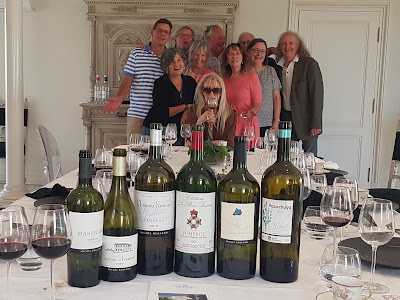




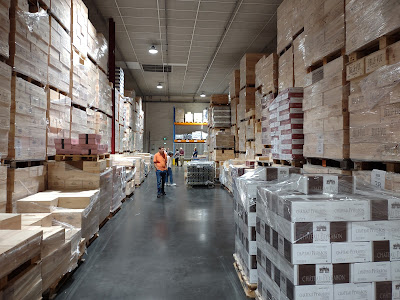




























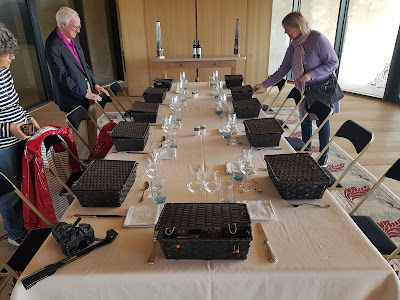


































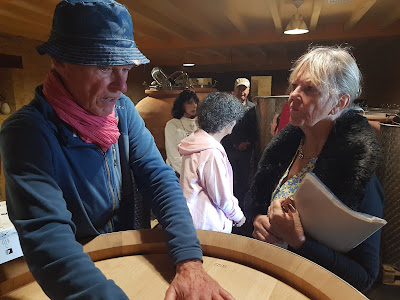



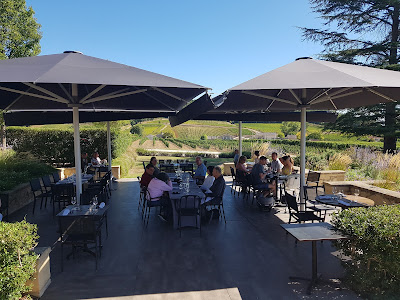




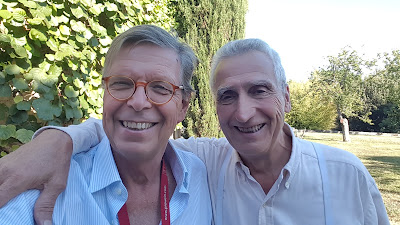






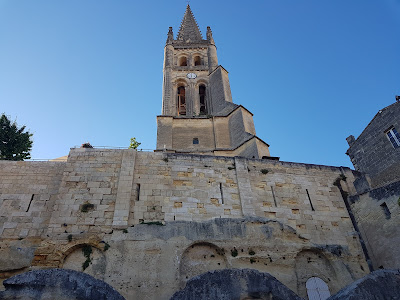











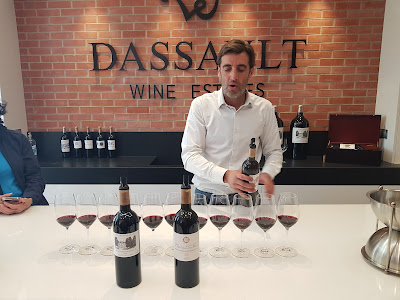











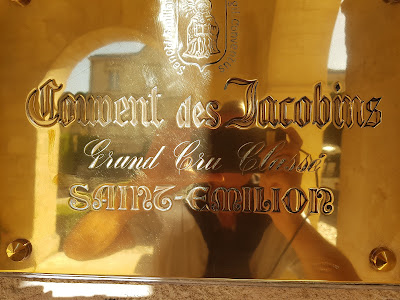
















































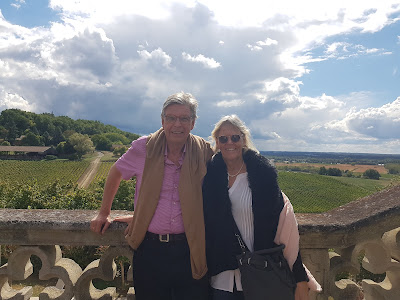
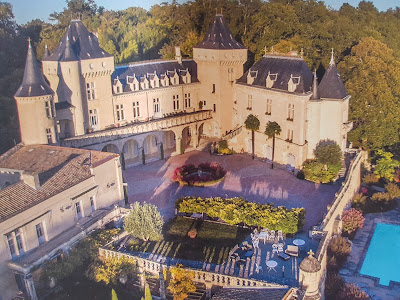




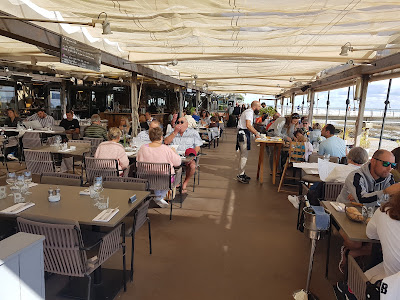



















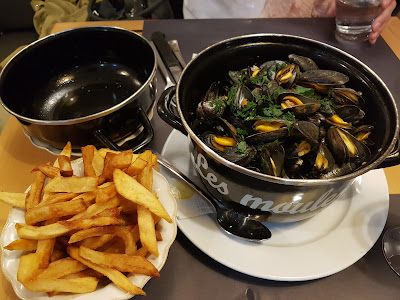
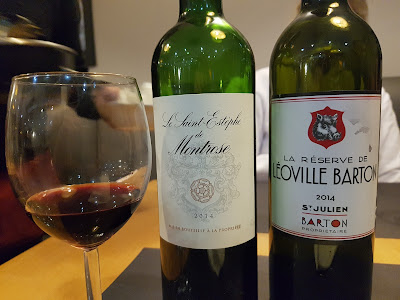







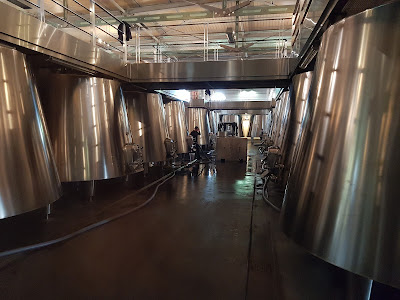











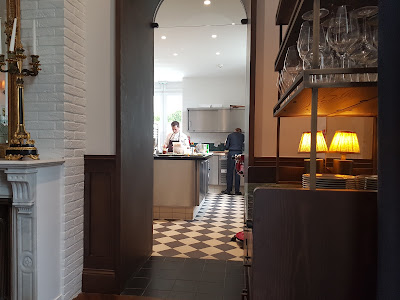

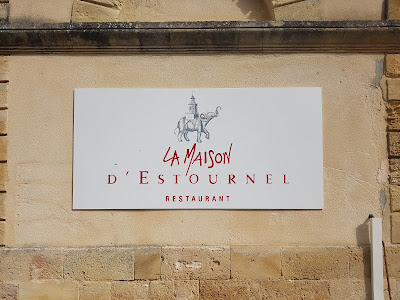





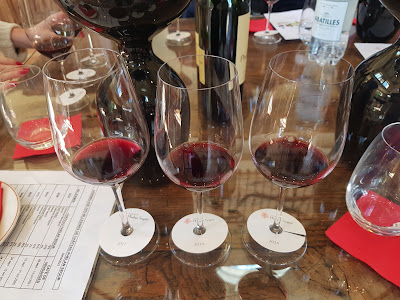






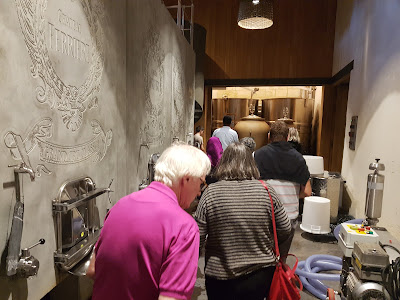











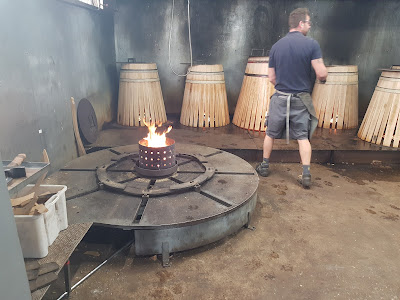


























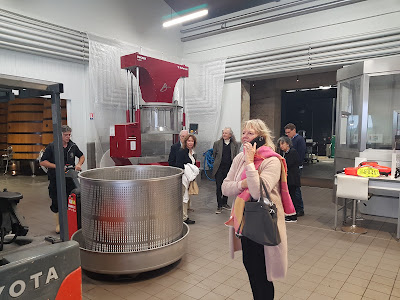
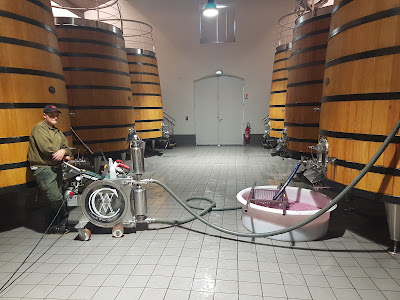










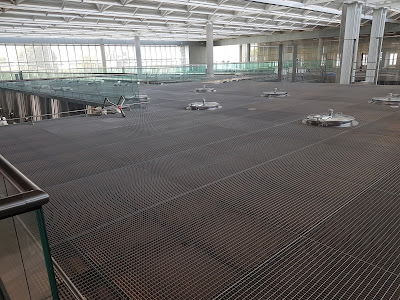




















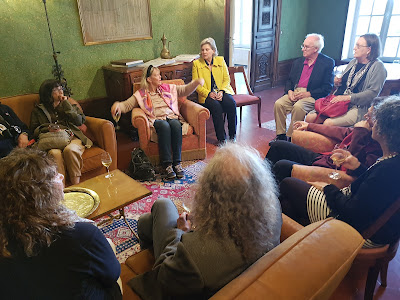








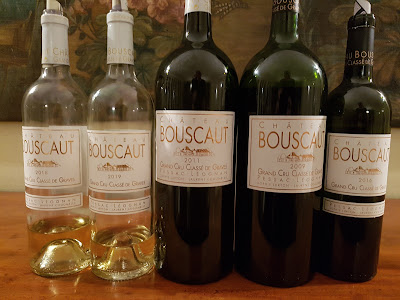






No comments:
Post a Comment